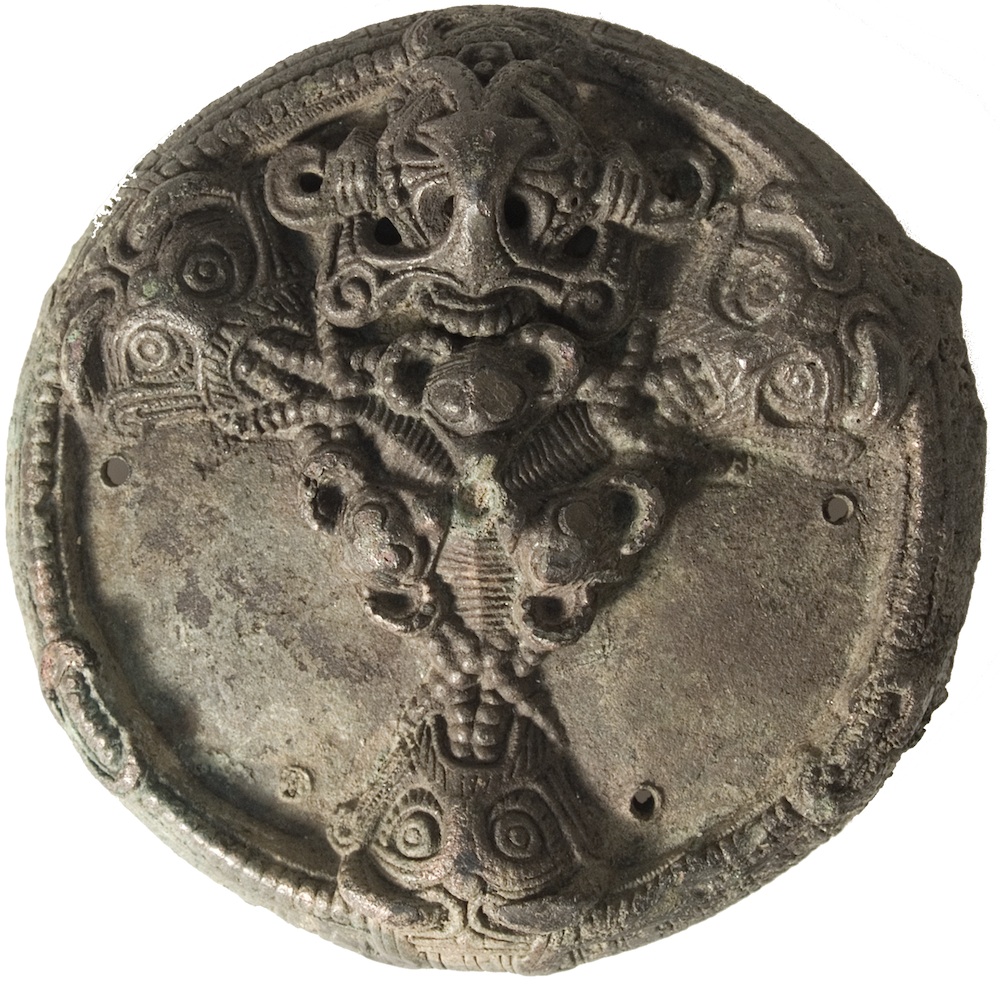Viking Jewelry Unearthed in Denmark

Several pieces of Viking jewelry, some of which contain gold, have been uncovered at a farm site in Denmark that dates as far back as 1,300 years.
Although the Vikings have a popular reputation as being raiders, they were also farmers, traders and explorers, and the craftsmanship seen in this jewelry demonstrates their artistic skills.
Archaeologists working with volunteers used metal detectors to find the jewelry in different spots throughout a farmstead on Zealand, the largest island in Denmark. The remains of the site, which is now called Vestervang, date from the late seventh to the early 11th centuries.
Finding such lavish goods at such a modest farm site poses a puzzle, the archaeologists said. The reason why the farm site would hold such treasure may lie in a legendary site located nearby. [See Photos of the Sparkling Viking Jewelry]
Heart-shaped animal head
The "most spectacular" example is 2.9 inches (73 millimeters) long and shows an image of a heart-shaped animal head with rounded ears and circular eyes, writes archaeologist Ole Thirup Kastholm, of the Roskilde Museum, in a paper published in the most recent edition of the Danish Journal of Archaeology. The piece, made of copper alloy, may be part of a necklace.
"The neck is covered by a beadlike chain," Kastholm writes. "Above the creatures forelegs, there are marked elbow joints and three-fingered paws or feet, which awkwardly grasp backwards to what might be hind legs or wings." The object probably had three similar images originally, but only one survives.
Sign up for the Live Science daily newsletter now
Get the world’s most fascinating discoveries delivered straight to your inbox.
In addition to the animal image, the item, possibly a pendant, also shows three masked figures, each with a "drooping moustache." A "circular mark is seen between the eyebrows and above this, two ears or horns emerge, giving the humanlike mask an animal character," Kastholm writes.
He said that the animal image itself seems to be anthropomorphic, something not unusual in Viking age art. "Some of these anthropomorphic pictures, though, might be seen as representations of 'shamanic' actions, i.e. as mediators between the 'real' world and the 'other' world," Kastholm wrote in an email to LiveScience. He can't say for sure who would have worn it, but it "certainly (was) a person with connections to the elite milieu of the Viking age."
A golden Christian mystery
Another mysterious piece of jewelry found at Vestervang depicts a Christian cross and appears to have been created in continental Europe sometime between A.D. 500 and 750, predating the Viking-age farm site. [In Photos: New Viking Voyage Discovered]

"The decoration consists of a central wheel cross in relief, with inlaid gold pressed into a waffle form. The waffle gold is in some areas covered with transparent red glass or semiprecious stones and forming an equal-armed cross," writes Kastholm in the paper.
How the artifact arrived at a pre-Christian Viking-age farm site is a mystery. A Christian traveler may have brought it to Vestervang, or a non-Christian person at the site may have acquired it through exchange. The item would have been used as a brooch, and Kastholm said a female of "high rank" perhaps wore it on her dress.
It "tells us about close relations and networks between Southern Scandinavia and the European continent in late Iron Age, before the time of Christianization," Kastholm wrote in the email.
Rich jewelry at a modest site
These discoveries leave researchers with a mystery. What is such rich jewelry doing at a modest agricultural settlement?
The answer may lie in a legendary site, named Lejre, which is located about 6 miles (10 kilometers) south-southeast of Vestervang, no more than three hours away by foot and boat.
"Legend has it that this was the place where the first Danish dynasty, the Scyldings, had its royal seat," writes Tom Christensen, also of the Roskilde Museum, in an article published in the book "Settlement and Coastal Research in the Southern North Sea Region" (Verlag Marie Leidorf, 2010). He notes that some members of this dynasty even appeared in the famous poem "Beowulf."
Archaeological research has revealed that Lejre appears to be a rich site. In 1850, a hoard consisting of "four silver vessels, a whetstone, a weight, a necklace and a disk-shaped silver ingot" was found in the nearby hills, Christensen noted. A monument 282 feet (86 meters) long made of rocks arranged in the shape of a ship was also reconstructed in later excavations.
The presence of this elite site close to Vestervang may explain the presence of the newly found rich jewelry, Kastholm writes. In the 1960s, there was vast residential development in the area of Vestervang, but maps that predate the development show two villages near the site with "Karleby" in their name, something that may signify that the area was given to retainers of Lejre's ruler.
"The old Scandinavian term karl, corresponding with the old English ceorl, refers to a member of the king's professional warrior escort, the hirð," Kastholm writes in the journal article.
Together, the rich jewelry finds at Vestervang, the site's proximity to Lejre and the presence of two nearby villages with the names "Karleby" reveal what life may have been like at Vestervang.
It "seems probable that the settlement of Vestervang was a farm controlled by a Lejre superior and given to generations of retainers, i.e. to a karl of the hirð," Kastholm writes. "This would explain the extraordinary character of the stray finds contrasting with the somewhat ordinary traces of settlement."
Follow LiveScience @livescience, Facebook & Google+. Original article on LiveScience.com.

Owen Jarus is a regular contributor to Live Science who writes about archaeology and humans' past. He has also written for The Independent (UK), The Canadian Press (CP) and The Associated Press (AP), among others. Owen has a bachelor of arts degree from the University of Toronto and a journalism degree from Ryerson University.










